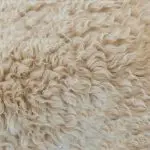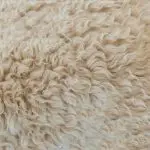Hey there, ever wondered if faux fur is truly as warm as it appears? You're not alone. Many people are curious about the insulating abilities of this popular material.
In this exploration, we'll delve into the science behind faux fur's warmth, compare it to real fur, and uncover the factors that affect its heat retention. By the end, you'll have a comprehensive understanding of whether faux fur lives up to its cozy reputation.
So, grab a warm beverage, settle in, and let's unravel the truth about the warmth of faux fur.
Key Takeaways
- Faux fur can provide warmth comparable to real fur.
- Real fur has inherent insulating properties that set it apart from faux fur.
- Faux fur alternatives have minimal environmental impact compared to real fur.
- Faux fur retains its insulation properties even when wet, unlike down insulation.
The Insulating Properties of Faux Fur
When it comes to the insulating properties of faux fur, you may be surprised to learn that it can provide warmth comparable to real fur. Faux fur alternatives have come a long way in mimicking the insulating qualities of genuine fur. The key lies in the material used and the construction of the garment. High-quality faux fur coats and accessories are designed to trap heat, making them just as warm as their real fur counterparts.
One of the key advantages of faux fur alternatives is their minimal environmental impact compared to real fur. The production of real fur involves raising and harvesting animals, which can have significant ecological consequences. Faux fur, on the other hand, eliminates the need for animal farming, reducing the overall environmental footprint of the fashion industry. Additionally, advancements in technology have led to the development of eco-friendly faux fur materials, further lessening the environmental impact.
Understanding the Warmth of Real Fur
To understand the warmth of real fur, consider its inherent insulating properties, which set it apart from faux fur alternatives. Real fur, obtained from animals, has been used for centuries for its exceptional ability to provide warmth in cold conditions. The unique thermal efficiency of real fur comes from the natural structure of the hairs and the air pockets within them, creating a powerful barrier against the cold. To comprehend the thermal performance disparity between real and synthetic fur, it's essential to examine their respective insulating capabilities.
| Aspect | Real Fur | Synthetic Fur |
|---|---|---|
| Thermal Efficiency | Natural air pockets provide superior insulation | Often requires thicker material for equivalent warmth |
| Breathability | Natural fibers allow air circulation, preventing sweat | May trap moisture and reduce comfort |
| Durability | Can maintain insulating properties for many years | Prone to losing insulating capabilities over time |
| Environmental Impact | May raise ethical concerns, but biodegradable | Often derived from non-renewable petroleum products |
Real fur's thermal efficiency, breathability, durability, and environmental impact distinguish it from synthetic alternatives, highlighting the complexity of the decision when considering warmth and insulation.
Factors Affecting Faux Fur's Heat Retention
Considering factors affecting faux fur's heat retention will provide insight into its effectiveness as a warm clothing option. The construction of faux fur heavily influences its ability to retain heat. Here are some key factors affecting faux fur's heat retention:
- Faux fur construction: The way in which the faux fur is constructed, including the density of the fibers and the overall thickness of the material, plays a significant role in its ability to retain heat. Thicker and denser faux fur tends to be more effective at trapping warmth.
- Heat distribution: The distribution of heat within the faux fur also impacts its overall warmth. Faux fur that evenly distributes heat across its surface area provides consistent warmth, while uneven heat distribution can result in cold spots.
- Moisture resistance: The ability of faux fur to resist moisture is crucial for heat retention. Moisture can significantly reduce the insulating properties of faux fur, making it less effective at retaining heat.
- Insulation technology: Some faux fur products incorporate advanced insulation technologies to enhance heat retention. These technologies can include reflective materials or specialized fibers designed to trap and retain heat effectively.
- Layering and lining: The presence of additional layers or linings within faux fur garments can contribute to increased heat retention, providing an extra barrier against the cold.
Comparing Faux Fur and Real Fur Insulation
As you compare faux fur and real fur insulation, you'll find that each material has distinct properties that affect its warmth and performance.
Faux fur, often made from synthetic materials, provides insulation through its ability to trap air between its fibers, similar to down insulation. This synthetic warmth can be effective in dry conditions, retaining heat even when wet.
On the other hand, real fur, such as that from animals like foxes or rabbits, offers natural warmth due to the density of the fur and its ability to provide exceptional insulation, making it suitable for extremely cold and wet conditions.
When comparing faux fur to down insulation, both offer different advantages. Faux fur can provide insulation similar to down, especially in dry conditions, while down insulation is renowned for its exceptional warmth-to-weight ratio and compressibility. However, down insulation loses its effectiveness when wet, unlike faux fur which retains its insulation properties.
Ultimately, the choice between faux fur and real fur insulation depends on the specific conditions and intended use, as well as ethical and environmental considerations.
Tips for Maximizing Warmth With Faux Fur
If you want to maximize the warmth of your faux fur, consider layering it with other insulating materials for added protection against the cold. Layering techniques can significantly enhance the insulation provided by faux fur, ensuring you stay toasty in chilly weather. Here are some tips for maximizing warmth with faux fur:
- Choose the Right Base Layer: Opt for moisture-wicking fabrics like merino wool or synthetic materials to keep sweat away from your skin and maintain warmth.
- Add a Quilted Vest: Layer a quilted vest over your faux fur for an extra layer of insulation while maintaining mobility.
- Utilize Thermal Underwear: Thermal underwear, especially those made from advanced synthetic materials, can trap body heat and provide an extra layer of warmth.
- Consider a Fleece Jacket: A fleece jacket can be an excellent mid-layer to add extra warmth without adding bulk.
- Invest in Windproof Outerwear: A windproof outer layer can prevent cold air from penetrating your clothing layers, enhancing overall warmth.
Frequently Asked Questions
Are There Any Environmental Benefits to Choosing Faux Fur Over Real Fur for Warmth?
Choosing faux fur over real fur for warmth has environmental benefits and supports animal welfare. Faux fur production reduces the demand for real fur, decreasing the environmental impact of fur farming and trapping.
How Does Faux Fur Insulation Compare to Other Synthetic Materials Like Polyester or Nylon?
Faux fur insulation provides excellent warmth, comparable to synthetic materials like polyester or nylon. In extreme cold weather, it offers effective protection. Consider ethical and environmental benefits when choosing, and ensure proper care maintenance for longevity.
Can Faux Fur Be Just as Effective in Extreme Cold Weather Conditions as Real Fur?
Faux fur insulation can be just as effective in extreme cold weather conditions as real fur. It provides warmth, has environmental benefits, and raises ethical considerations. Proper care maintenance ensures its longevity compared to other synthetic materials.
Are There Any Ethical Considerations to Take Into Account When Choosing Faux Fur for Warmth?
When choosing faux fur for warmth, it's crucial to consider ethical sourcing and animal welfare. By ensuring that the faux fur is ethically produced, you can stay warm without compromising your values.
What Are the Best Ways to Care for and Maintain the Warmth of Faux Fur Products?
To maintain faux fur warmth, use gentle cleaning methods like spot cleaning and air drying. Store in a breathable, cool space. Enhance heat retention with waterproofing techniques. Remember, proper care ensures lasting warmth and coziness.
- Is Chiffon a Lightweight? - April 23, 2024
- Is Chiffon Cool in Hot Weather? - April 23, 2024
- Is Pure Chiffon Costly? - April 23, 2024







